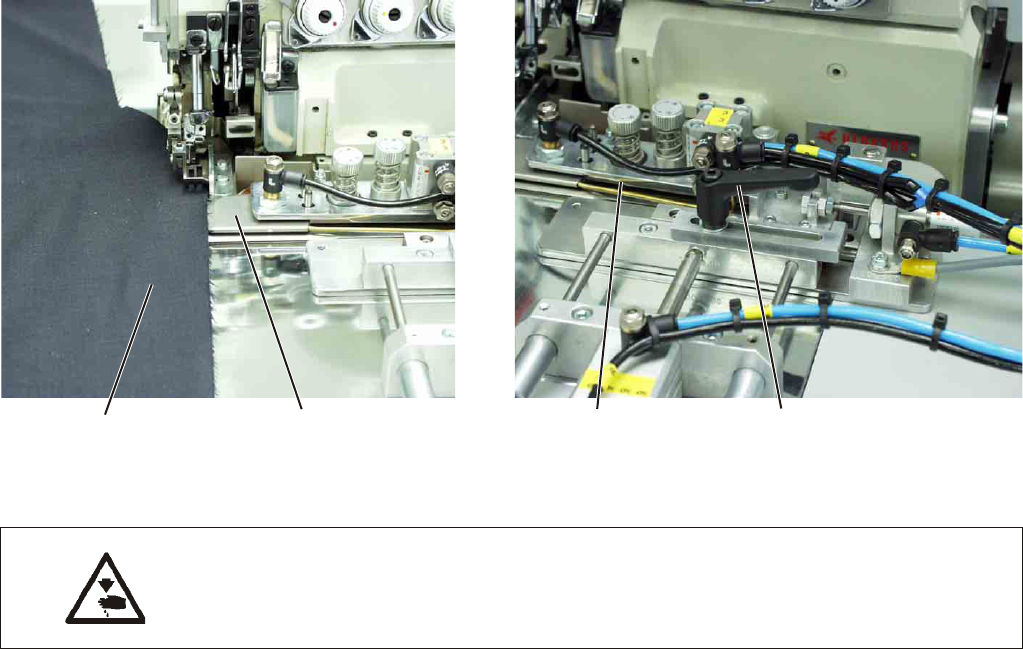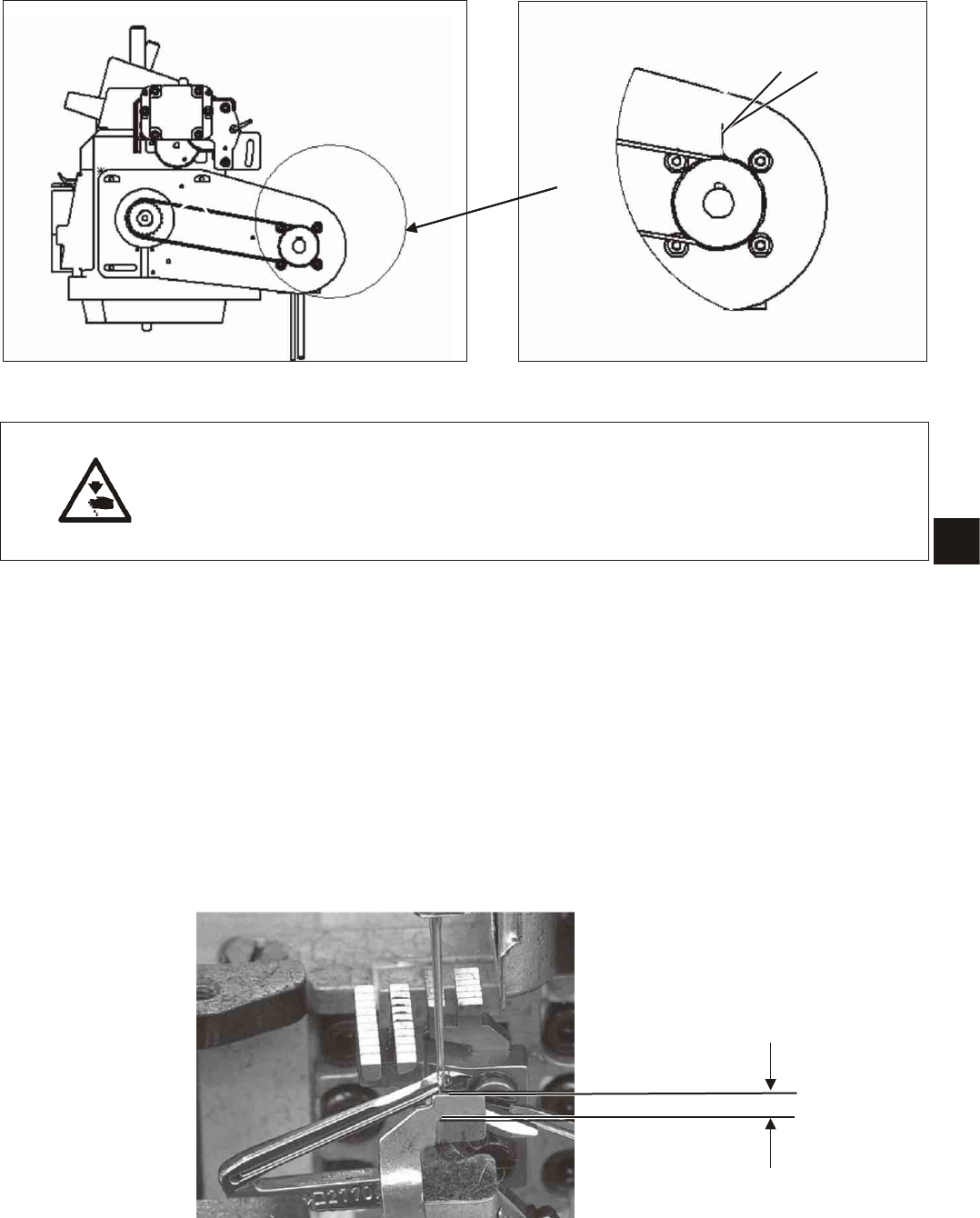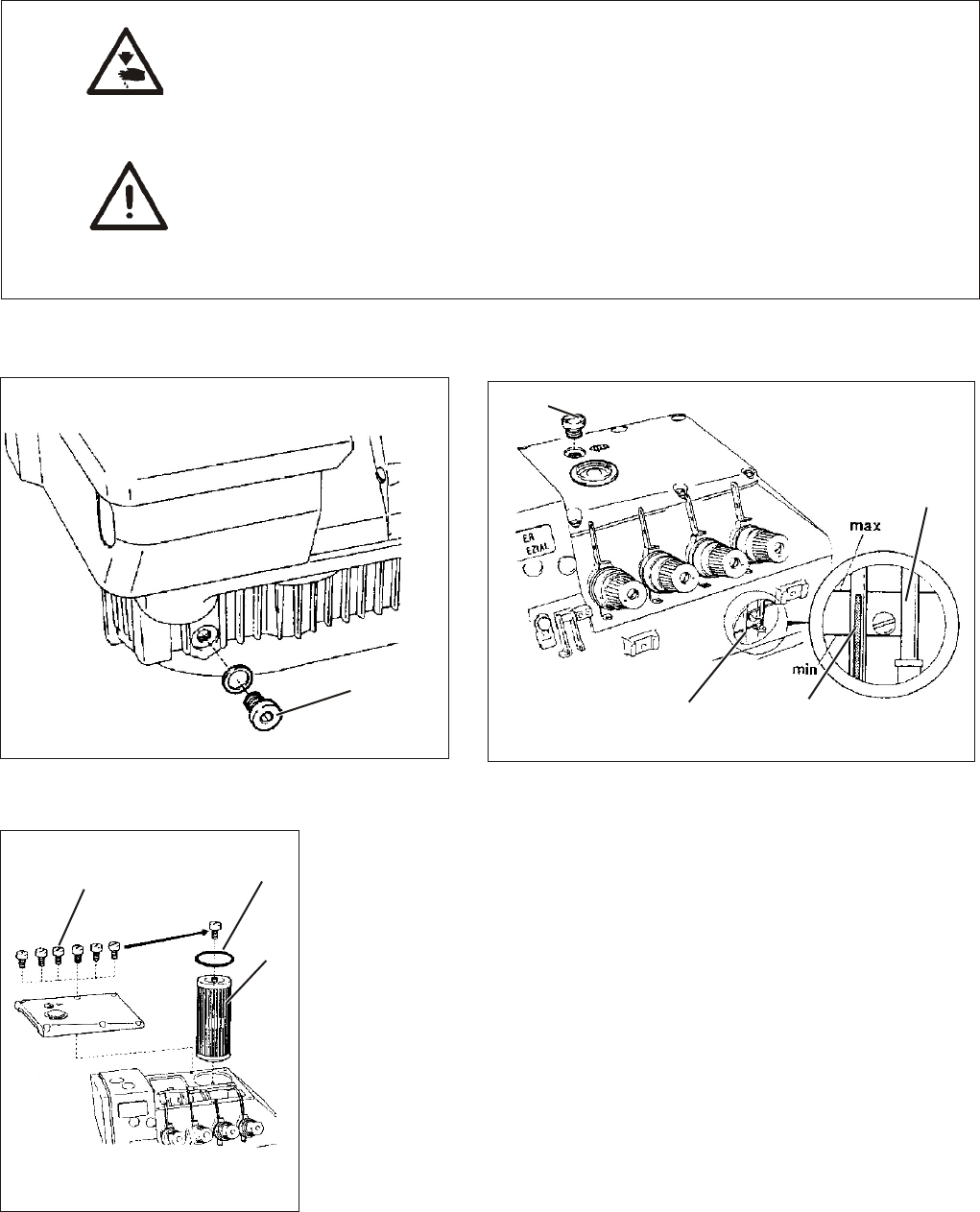–
External control panel Efka V850 with:
- Menu navigation
- Freely programmable parameters for
“Differential bottom feed (optional)”, “Needle feed
(optional)”, “Ejector roller”, “Puller”, “Machine parameters”,
“Global parameters”, “Program sequences”
- Input and output tests
- Check routine for step motors
- 20 program storage locations
- up to 7 seam programs per program storage location
–
Vertical cutter with suction for overlocking and serging in one
operation
–
Chain separator with suction, programmable
–
Adjustable blowing nozzles in the table top for supporting the
material feed, mechanical regulation of the blowing intensity by an
adjusting knob, duration of table blowing programmable
–
Preparation table with mouse and reverse device for the
workpieces; for a uniform material guide and higher productivity
–
Special sewing equipment for trousers side seams with side seam
pockets and wing pockets
–
Narrow sewing tools incl. narrow sewing foot for trouble-free
guiding / sewing of the pocket openings
–
Automatic contour modulation by programmable puller
–
Height-adjustable stand, infinitely variable from 850 mm to
1200 mm
–
Automatic fullness distribution by step motor-controlled needle and
bottom feed (optional). Within a seam program the fullness of the
needle and bottom feed can be programmed at the control panel
via 3 freely selectable lines. User-friendly adjusting possibility of
the fullness in one line via each one controller.
–
Integrated stacking device
–
Manual stacking via shortcut key
1.3 Technical data:
Machine head: Pegasus EXT 3216-03/233-K 5x5-KH-021A
Stitch type: 401, 515, 516
Number of needles: 1 or 2
Needle system: B27
Needle size: Nm 80 to Nm 110
Hook type: Chainstitch hook, cross-line, overlock hook
Threads: see table chapter 4.2
Speed: 6500 r/ min
Speed upon
delivery: 6500 r/ min
Stitch length min. : 0.5 mm
max.: 3.5 mm
Seam width: 10 mm
Optional: 8 - 12 mm
Material: Light to medium-weight material
Operating pressure: 6 bar
Air consumption: 20 NL per working cycle
Rated voltage: 1 x 230 V 50/60 Hz
Rated load: 1.00 kVA
4

















































































